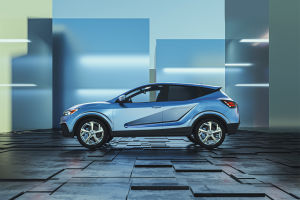Have you ever wondered what makes your car move? At the heart of every vehicle lies its engine, a powerful machine that converts fuel into motion. Understanding how a car engine works can deepen our appreciation for the complexity and innovation behind modern vehicles.
Whether you're a car enthusiast or simply someone interested in learning more, this guide will help you grasp the basics of how car engines function and what makes them so essential to our daily drives.
What Is a Car Engine?
A car engine is essentially a machine designed to convert fuel (usually gasoline or diesel) into mechanical energy, which powers the vehicle. It works through a series of controlled explosions that generate power. This power is then used to turn the wheels, allowing the car to move. While there are different types of engines, the most common one we see in vehicles is the internal combustion engine (ICE).
In an internal combustion engine, fuel is mixed with air and ignited inside a chamber. This explosion creates a burst of energy that moves pistons. The movement of the pistons is what ultimately turns the crankshaft and, through various mechanical processes, powers the car.
How Does a Car Engine Work?
At its core, a car engine operates in cycles. The most common one is called the four-phase cycle, which includes the intake, compression, power, and exhauststrokes. Let’s break down each step:
1. Intake Phase: The engine's intake valve opens, and the piston moves down, allowing a mixture of air and fuel to enter the combustion chamber.
2. Compression Phase: The piston moves back up, compressing the air-fuel mixture to prepare it for ignition.
3. Power Cycle: The spark plug ignites the compressed mixture, causing an explosion. This explosion pushes the piston down and generates power.
4. Exhaust Phase: The exhaust valve opens, and the piston moves up again, pushing out the exhaust gases from the previous explosion.
This cycle repeats continuously, powering the engine and moving the vehicle.
Types of Car Engines
While the internal combustion engine is the most common, there are several other types of engines used in vehicles today:
Electric Engines: Found in electric vehicles (EVs), these engines use electricity stored in batteries to power an electric motor. Unlike internal combustion engines, electric motors don’t rely on fuel combustion, making them cleaner and more environmentally friendly.
Hybrid Engines: Hybrid vehicles combine both an internal combustion engine and an electric motor. The engine switches between the two, depending on driving conditions, to optimize fuel efficiency and reduce emissions.
Diesel Engines: Diesel engines are similar to gasoline engines but use diesel fuel, which is denser and contains more energy. Diesel engines are often more fuel-efficient and are commonly found in trucks and heavy-duty vehicles.
Key Components of an Engine
A car engine is a complex system made up of many important parts. Here are some of the key components that work together to make the engine function:
Pistons: These are metal cylinders that move up and down in the engine's cylinders. The pistons are driven by the explosion in the combustion chamber, transferring force to the crankshaft.
Crankshaft: The crankshaft turns the up-and-down motion of the pistons into rotational motion, which ultimately drives the car's wheels.
Camshaft: The camshaft controls the opening and closing of the engine’s valves, ensuring the proper timing of the intake and exhaust strokes.
Valves: These allow the intake of air and fuel into the combustion chamber and let the exhaust gases out.
Spark Plug: The spark plug ignites the air-fuel mixture, causing the explosion that powers the engine.
Timing Belt: This belt ensures that the camshaft and crankshaft are synchronized to keep the engine running smoothly.
Maintaining Your Engine
Taking good care of your engine is crucial for the longevity and performance of your vehicle. Here are some maintenance tips to keep your engine running smoothly:
Regular Oil Changes: Oil lubricates the engine's moving parts, preventing friction and wear. Changing the oil at regular intervals is essential to keep the engine functioning properly.
Check the Air Filter: A clogged air filter can reduce the engine's efficiency. Make sure to replace it regularly to maintain optimal air flow.
Monitor Coolant Levels: The engine needs to stay cool to prevent overheating. Always check the coolant levels and top them off when necessary.
Keep the Timing Belt in Check: A worn-out timing belt can cause serious engine problems. Be sure to replace it according to your vehicle's maintenance schedule.
Final Thoughts
The engine is the heart of every vehicle, converting fuel into motion and powering our everyday commutes and adventures. Whether it's an internal combustion engine, an electric motor, or a hybrid system, the engine plays a crucial role in ensuring our vehicles run efficiently and safely. By understanding how engines work and keeping them well-maintained, we can enjoy smoother rides and extend the lifespan of our cars. So, next time you start your engine, take a moment to appreciate the remarkable technology that keeps us moving forward!


